The automotive market is constantly evolving, with a growing emphasis on efficiency, technology, and user experience. Among the contenders in the SUV segment, the Dacia Duster and the Peugeot 3008 stand out as appealing options. Each vehicle caters to distinct preferences and needs, making a comparison vital for potential buyers. In this article, we explore the technical aspects, innovations, and overall value each model brings to the table.
Dacia Duster vs Peugeot 3008 – Performance, range & efficiency compared
Two cars, one duel: Dacia Duster meets Peugeot 3008.
Which one wins in performance, efficiency and value for money? Find out now!
Design and Dimensions
The Dacia Duster, known for its rugged and practical design, measures 4343 mm in length, 1813 mm in width, and stands 1656 mm high. This SUV showcases a robust aesthetic combined with functional elements, making it an ideal vehicle for both urban and off-road adventures.
On the other hand, the Peugeot 3008 embodies a more modern and sleek design philosophy. It is slightly longer at 4542 mm, wider at 1895 mm, and higher at 1641 mm. The 3008's contemporary styling, combined with its aggressive stance, gives it a premium feel that appeals to drivers seeking sophistication.
Engine Options and Performance
Starting with the Dacia Duster, the 2024 model offers a range of engine types including LPG, full hybrid, and petrol MHEV. The power output varies from 91 HP to 140 HP, coupled with a selection of either manual or automatic transmission. The Duster's fuel economy ranges from 5 L/100km to 8.1 L/100km, allowing for efficient driving in various conditions. Acceleration from 0-100 km/h can be as quick as 9.9 seconds, showcasing impressive responsiveness for an SUV of its size.
The Peugeot 3008 presents an array of advanced engine configurations, including petrol MHEV, plug-in hybrid, and fully electric variants. With a maximum power output of 231 HP, the 3008 excels in performance with 0-100 km/h acceleration times as low as 8.4 seconds. The fuel consumption is competitive, with some models achieving as little as 0.9 L/100km in electric range usage. The extensive electric range of up to 698 km makes it an attractive option for eco-conscious consumers.
Innovation and Technology
In terms of innovations, the Dacia Duster prioritizes practicality, offering functional features without overwhelming complexity. It boasts a 50-liter fuel tank capacity and generous trunk space ranging between 430 to 517 liters, making it a suitable choice for families or outdoor activities.
Conversely, the Peugeot 3008 integrates advanced technology into its design. The dual-clutch automatic transmission enhances driving dynamics while the plugin hybrid options offer versatile energy solutions. The 3008 also showcases an impressive range of safety features and an 8.0-inch touchscreen interface, perfect for tech-savvy drivers.
Interior Comfort and Space
Both vehicles offer a comfortable seating arrangement for five passengers. The Dacia Duster is known for its spacious interior and user-friendly layout. The materials may lean towards the utilitarian, but it doesn’t compromise on comfort for everyday use.
In contrast, the Peugeot 3008 elevates the driving experience with high-quality interior materials and ergonomic design. It features a more refined cabin atmosphere, complemented by ambient lighting and customizable digital displays. The trunk capacity of 520 liters further complements its spaciousness, making it a practical choice for longer travels.
Final Thoughts: Which SUV Reigns Supreme?
When comparing the Dacia Duster and the Peugeot 3008, it’s essential to consider what you prioritize in a vehicle. The Duster appeals to buyers looking for a straightforward, rugged SUV that offers great value for money, alongside efficient engine options.
However, the Peugeot 3008 stands out for its sophisticated design, impressive technology integrations, and a diverse range of powertrains, particularly suited for eco-conscious drivers who value performance and style. Ultimately, both vehicles have their strengths, catering to different consumers in the competitive SUV market.
Here’s where it gets real: The technical differences in detail
Costs and Efficiency:
Price and efficiency are key factors when choosing a car – and this is often where the real differences emerge.
Dacia Duster has a decisively advantage in terms of price – it starts at 16300 £, while the Peugeot 3008 costs 35100 £. That’s a price difference of around 18865 £.
Fuel consumption also shows a difference: Peugeot 3008 manages with 0.90 L and is therefore decisively more efficient than the Dacia Duster with 5 L. The difference is about 4.10 L per 100 km.
Engine and Performance:
Power, torque and acceleration are the classic benchmarks for car enthusiasts – and here, some clear differences start to show.
When it comes to engine power, the Peugeot 3008 has a convincingly edge – offering 325 HP compared to 140 HP. That’s roughly 185 HP more horsepower.
In acceleration from 0 to 100 km/h, the Peugeot 3008 is significantly quicker – completing the sprint in 6 s, while the Dacia Duster takes 9.90 s. That’s about 3.90 s faster.
In terms of top speed, the Peugeot 3008 performs to a small extent better – reaching 220 km/h, while the Dacia Duster tops out at 180 km/h. The difference is around 40 km/h.
There’s also a difference in torque: Peugeot 3008 pulls clearly stronger with 511 Nm compared to 230 Nm. That’s about 281 Nm difference.
Space and Everyday Use:
Cabin size, boot volume and payload all play a role in everyday practicality. Here, comfort and flexibility make the difference.
Both vehicles offer seating for 5 people.
In curb weight, Dacia Duster is clearly perceptible lighter – 1351 kg compared to 1648 kg. The difference is around 297 kg.
In terms of boot space, the Peugeot 3008 offers slight more room – 520 L compared to 517 L. That’s a difference of about 3 L.
In maximum load capacity, the Dacia Duster performs minimal better – up to 1609 L, which is about 129 L more than the Peugeot 3008.
When it comes to payload, Peugeot 3008 minimal takes the win – 467 kg compared to 430 kg. That’s a difference of about 37 kg.
Who wins the race?
The Peugeot 3008 proves to be leaves the rival little chance and therefore becomes our DriveDuel Champion!
Peugeot 3008 is the better all-rounder in this comparison.
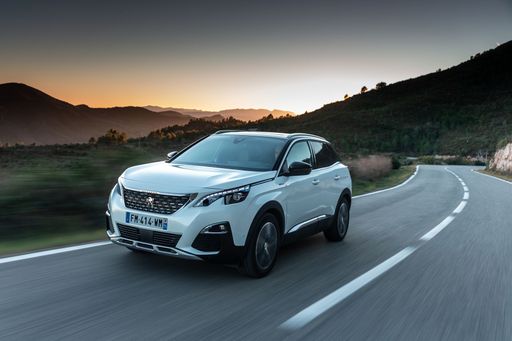
Peugeot 3008
Dacia Duster
The Dacia Duster represents a compelling choice for those seeking an affordable yet robust SUV in the market. With its rugged design and practicality, it tackles both urban commutes and off-road adventures with ease. Inside, the vehicle offers a spacious cabin that ensures comfort, while maintaining its reputation for delivering excellent value for money.
details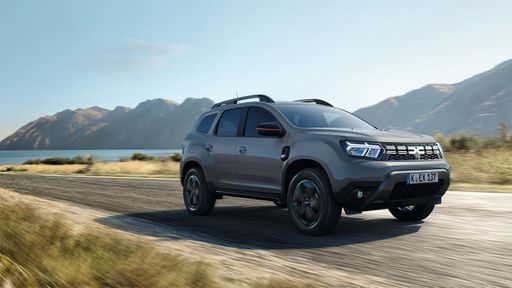 @ dacia-presse.de
@ dacia-presse.de
 @ dacia-presse.de
@ dacia-presse.de
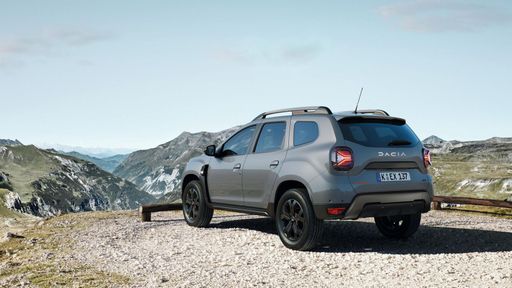 @ dacia-presse.de
@ dacia-presse.de
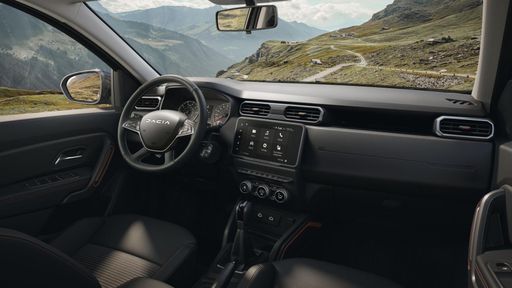 @ dacia-presse.de
@ dacia-presse.de
Peugeot 3008
The Peugeot 3008 is a compact SUV that seamlessly combines sleek design with modern functionality. Its interior offers a sophisticated and comfortable driving experience, characterised by high-quality materials and innovative technology features. With its dynamic performance and stylish aesthetics, the 3008 stands out in the competitive world of family SUVs.
details @ media.stellantis.com
@ media.stellantis.com
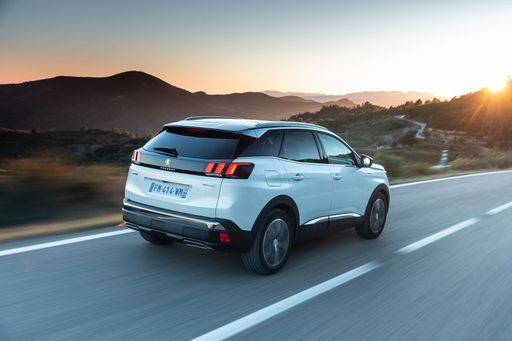 @ media.stellantis.com
@ media.stellantis.com
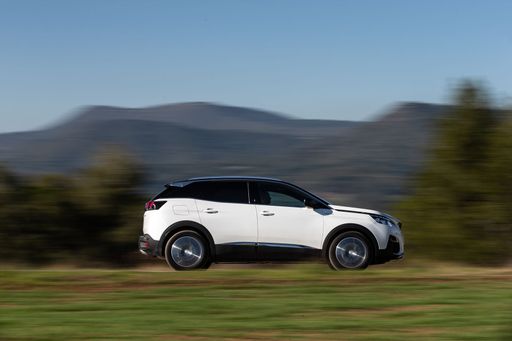 @ media.stellantis.com
@ media.stellantis.com
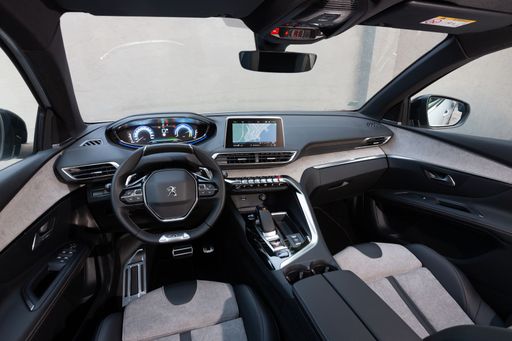 @ media.stellantis.com
@ media.stellantis.com

|

|
|
|
|
Costs and Consumption |
|
|---|---|
|
Price
16300 - 24800 £
|
Price
35100 - 51400 £
|
|
Consumption L/100km
5 - 7.6 L
|
Consumption L/100km
0.9 - 5.4 L
|
|
Consumption kWh/100km
-
|
Consumption kWh/100km
16.9 - 17.8 kWh
|
|
Electric Range
-
|
Electric Range
85 - 698 km
|
|
Battery Capacity
0.60 kWh
|
Battery Capacity
0.4 - 96.9 kWh
|
|
co2
113 - 148 g/km
|
co2
0 - 121 g/km
|
|
Fuel tank capacity
49 - 55 L
|
Fuel tank capacity
55 L
|
Dimensions and Body |
|
|---|---|
|
Body Type
SUV
|
Body Type
SUV
|
|
Seats
5
|
Seats
5
|
|
Doors
5
|
Doors
5
|
|
Curb weight
1351 - 1465 kg
|
Curb weight
1648 - 2337 kg
|
|
Trunk capacity
430 - 517 L
|
Trunk capacity
470 - 520 L
|
|
Length
4343 mm
|
Length
4542 mm
|
|
Width
1813 mm
|
Width
1895 mm
|
|
Height
1656 - 1661 mm
|
Height
1641 mm
|
|
Max trunk capacity
1545 - 1609 L
|
Max trunk capacity
1430 - 1480 L
|
|
Payload
414 - 430 kg
|
Payload
383 - 467 kg
|
Engine and Performance |
|
|---|---|
|
Engine Type
LPG, Full Hybrid, Petrol MHEV
|
Engine Type
Plugin Hybrid, Electric, Petrol MHEV
|
|
Transmission
Manuel, Automatic
|
Transmission
Automatic
|
|
Transmission Detail
Manual Gearbox, Automated Manual
|
Transmission Detail
Dual-Clutch Automatic, Reduction Gearbox
|
|
Drive Type
Front-Wheel Drive, All-Wheel Drive
|
Drive Type
Front-Wheel Drive, All-Wheel Drive
|
|
Power HP
91 - 140 HP
|
Power HP
145 - 325 HP
|
|
Acceleration 0-100km/h
9.9 - 14 s
|
Acceleration 0-100km/h
6 - 10.2 s
|
|
Max Speed
160 - 180 km/h
|
Max Speed
170 - 220 km/h
|
|
Torque
160 - 230 Nm
|
Torque
230 - 511 Nm
|
|
Number of Cylinders
3 - 4
|
Number of Cylinders
3 - 4
|
|
Power kW
67 - 104 kW
|
Power kW
107 - 239 kW
|
|
Engine capacity
999 - 1598 cm3
|
Engine capacity
1199 - 1598 cm3
|
General |
|
|---|---|
|
Model Year
2024 - 2025
|
Model Year
2024 - 2025
|
|
CO2 Efficiency Class
D, C, E
|
CO2 Efficiency Class
B, A, D
|
|
Brand
Dacia
|
Brand
Peugeot
|
What drivetrain options does the Dacia Duster have?
The Dacia Duster is offered with Front-Wheel Drive or All-Wheel Drive.
The prices and data displayed are estimates based on German list prices and may vary by country. This information is not legally binding.
